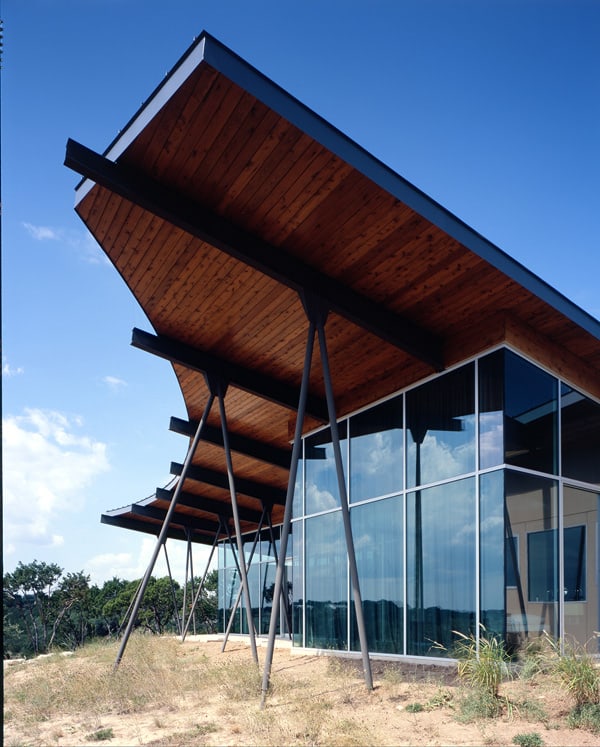
Trahan Ranch is a stunning residential modern compound designed by Patrick Tighe Architecture, situated in the heart of hill country in Austin, Texas. The 3200 square foot residence is on a fourteen acre sloped site with native oaks, natural springs and unobstructed views. The layout of the house is a direct response to the site conditions.
The plan is organized to integrate and enhance the many features of the landscape. A panoramic view that spans 260 degrees is experienced as well as other more site specific orientations. The front of the house is made of heavy materials that rise from the earth. The building is nestled into the brow of the hill and have an unassuming appearance when seen from a distance.
The heavy, solid, grounded front is in sharp contrast to the more ephemeral back. At the down slope side of the house, the structure becomes lighter and opens to the landscape. Steel pipe columns splay at unsuspecting angles dancing along the rugged landscape.
The architecture explores a series of counterpoints including heavy and light, front and back, open and closed and contemporary and vernacular. The grounded front is composed of heavy materials rising from the earth in sharp contrast to the more ephemeral back. The structure rises and becomes lighter at the down-slope side of the house as it opens to the landscape. The main house is a contemporary interpretation of Texas Hill Country post-and-beam construction that exploits regional materials and the expertise of local trades-people. The spaces of the main house flow from one to the other without doors while the guest room appendage is a more traditional layout.
The environmentally mindful design includes a hydronically-heated concrete slab on grade. The concrete foundation and walls provide high thermal mass. Large overhangs and covered walkways offer protection from the sun and cross- ventilation is used. Natural materials are used throughout including concrete, steel, stone and metals.
Texas Hill Country limestone was chosen from the site to create the over-sized Rumford fireplace that is central to the living space. An arbor connects building components and functions as an armature for solar photovoltaic panels that provide power for the property. The landscape consists of regional drought- tolerant plants that are native to the area and the local ecosystem.
The steel frame structure is a kit of parts prefabricated in a shop and erected on-site. The steel pieces attach to a series of exposed board-formed reinforced concrete pylons that are a vertical extension of the foundation.
Photos: Art Gray Photography





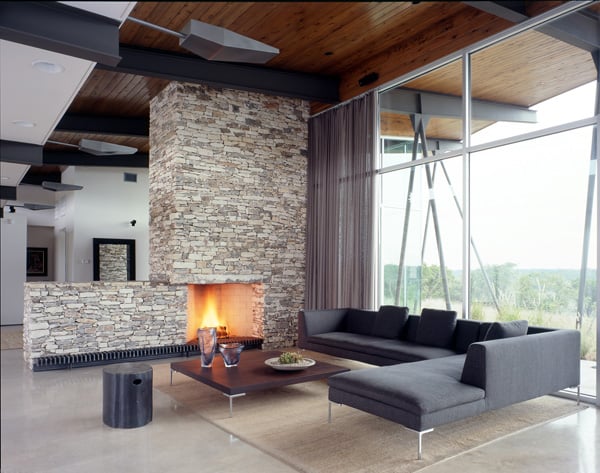
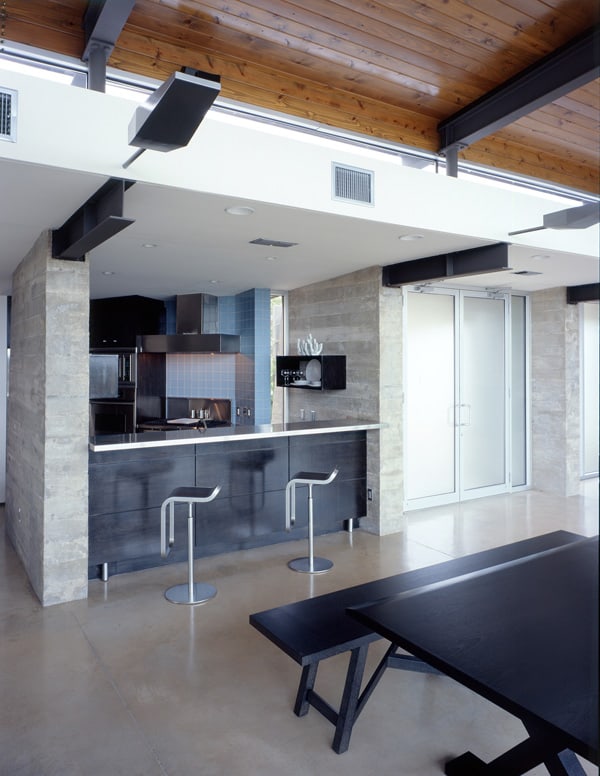


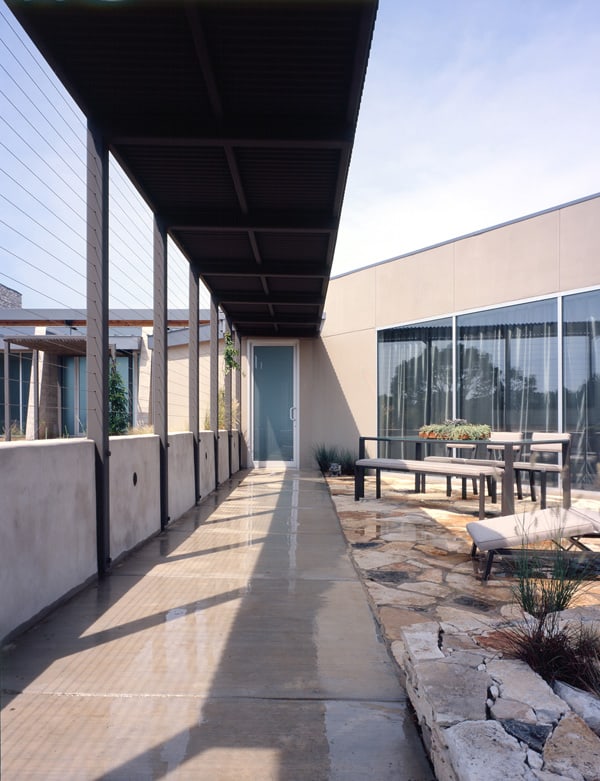

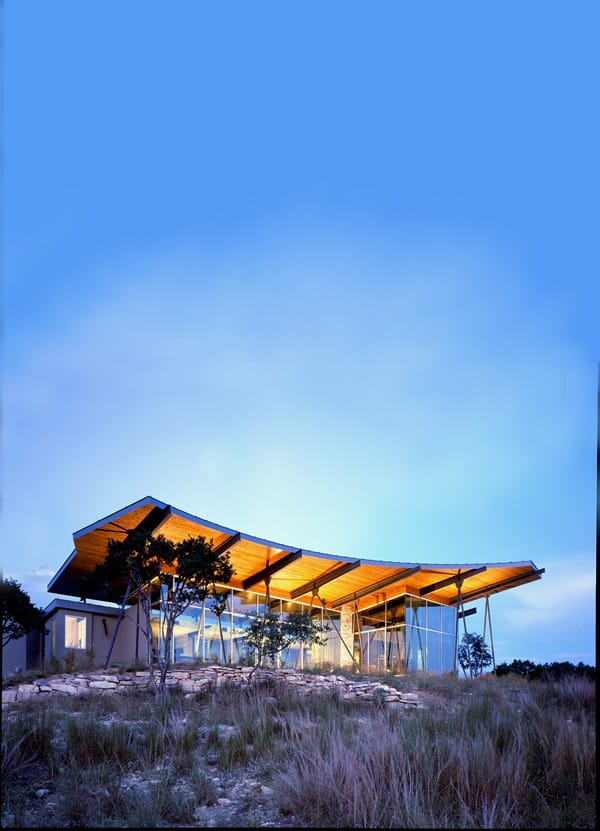
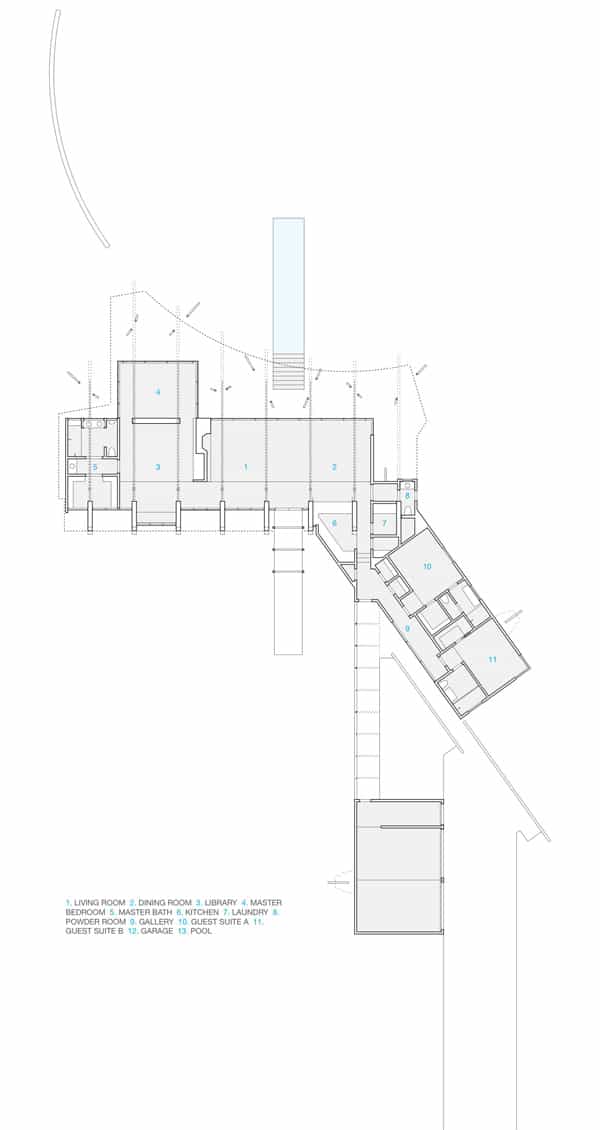
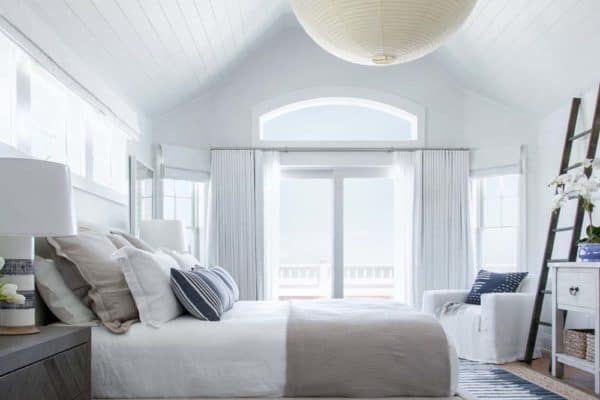
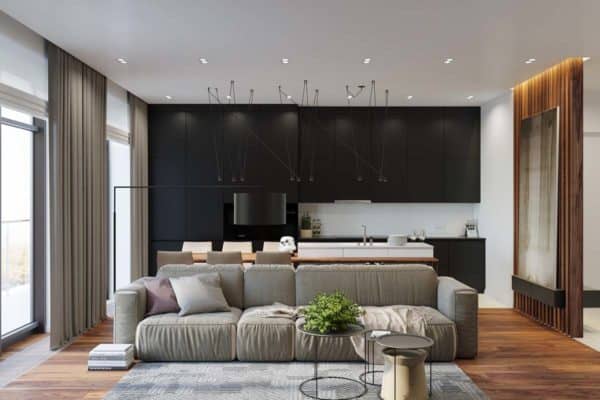
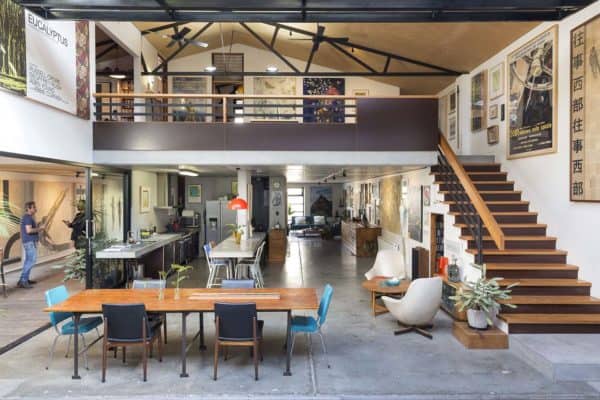
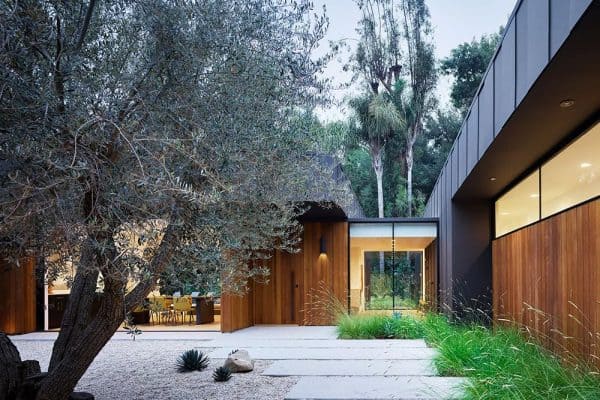
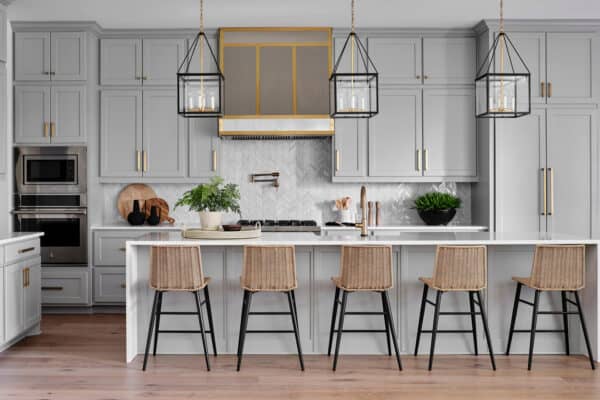

0 comments